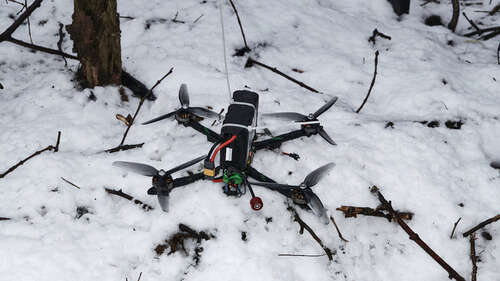
Most of the FPV drones in use today by both Ukraine and Russia are commercial-grade FPV drones, such as the DJI FPV, which weigh no more than 800 grams. Yet, with beefy quad-rotors, they’re capable of tearing through the air at speeds over 87 miles per hour unloaded. The speed is one part of the drone’s lethality, making it difficult to shoot down and — for its victims — difficult to evade.
Pilots control these drones remotely via a joystick while wearing specialized FPV goggles that provide an immersive, first-person perspective through the drone’s camera. This cockpit view allows for pinpoint accuracy, enabling the drones to be used for “sniping” targets through open hatches, doorways, and even windows.
Initially, these commercial drones were rigged with small payloads like Vog-17 grenades for anti-personnel roles or RKG-3 anti-tank grenades to take on vehicles. As the war progressed, more potent RPG-7 rounds were strapped to the drones and even custom explosively-formed penetrator (EFP) charges, which significantly boosted their anti-armor capabilities. This upgrade made them a formidable threat to tanks on both sides. Combat engineers have become highly resourceful in crafting detonators for the payload as well. Some rigs use two coiled wires hung in front of the drone, separated by an air gap. When the drone hits its target, the wires cross, completing the circuit and triggering the explosive. Recent iterations can be remotely detonated mid-air to create an airburst effect (a rain of lethal shrapnel) down on infantry.

